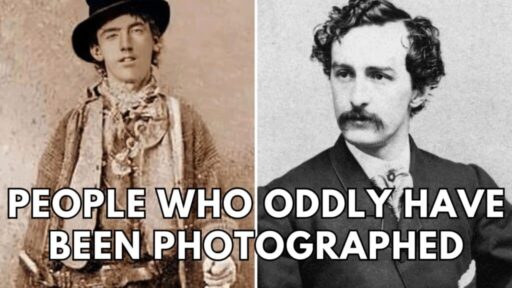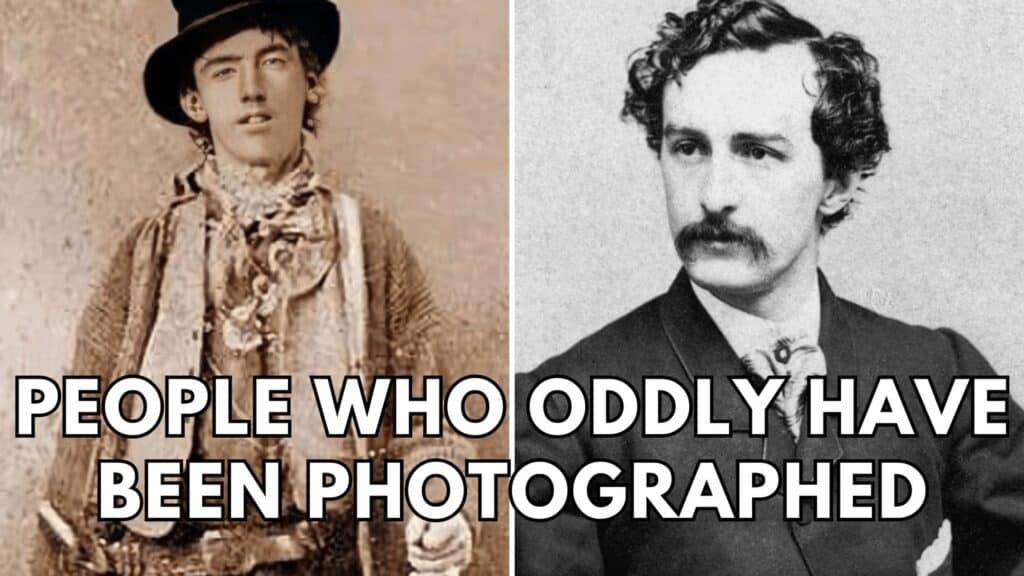Since our school days, we’ve grown accustomed to encountering awe-inspiring portraits of iconic historical figures such as George Washington, Helen Keller, and Isambard Kingdom Brunel, to name a few. It’s pretty mind-boggling to consider that the birth of photography in the late 1820s opened up a whole new realm of human history. We’re here today to delve into a selection of historic photographs showing the familiar faces of some of history’s most iconic personalities.
#1: John Quincy Adams
John Quincy Adams, born on July 11, 1767, to John and Abigail Adams, served as the sixth President of the United States from 1825 to 1829. He was not just a president but a versatile American statesman, diplomat, lawyer, and diarist. Before his presidency, Adams was the eighth United States Secretary of State from 1817 to 1825.

He followed in the footsteps of his father, John Adams, who was the second U.S. President from 1797 to 1801. Born in Braintree, Massachusetts, Adams spent much of his early life in Europe, where his father served as a diplomat. Tragically, in 1848, he succumbed to a stroke and passed away after collapsing on the floor of the House.
#2: Charles Darwin
Meet Charles Robert Darwin, the English naturalist, geologist, and biologist who left an indelible mark on science. Born on February 12, 1809, he’s renowned for his groundbreaking contributions to the field of evolution. In 1859, Darwin shook the scientific community by publishing his compelling book, “On the Origin of Species,” where he presented a persuasive case for his evolutionary theory.

Darwin’s bold proposal that all life forms share a common ancestry has become a cornerstone of modern science. His theory of evolution and the concept of natural selection, which he championed, are now famously called “Darwinism.” After a lifetime of unwavering dedication to his craft, Charles Darwin died in London on April 19, 1882.
#3: Uncle Sam
Allow me to introduce you to Samuel Wilson, a meat packer from Troy, New York, whose name is intricately linked to the iconic personification of the United States known as “Uncle Sam.” Back in the War of 1812, Samuel provided the military with barrels of beef, and he did something quite interesting—he stamped those barrels with a simple “U.S.,” signifying that these goods belonged to the government.

Fast-forward to the First World War, and Uncle Sam takes center stage in a memorable U.S. Army recruitment poster. In this vivid portrayal, Uncle Sam commands attention, pointing his finger assertively at the viewer and rallying young men to join the noble cause of the war effort. It’s a testament to how one man’s simple act of labeling can evolve into a powerful emblem of national identity.
#4: Daniel Frederick Bakeman
Daniel Frederick Bakeman is a remarkable individual who has a unique place in American history. Born on October 9, 1759, he is the last surviving recipient of a Veteran’s pension for his valiant service during the American Revolutionary War. Bakeman’s wartime tales are entwined with his service in a militia unit under the command of Marinus Willett. However, he later lamented the loss of his service records in a house fire.

Remarkably, Bakeman’s life was marked by fire-related misfortunes on multiple occasions. Then, on February 14, 1867, a significant turning point occurred when the U.S. Congress enacted special legislation granting Bakeman a well-deserved pension for his role in the War of Independence. Sadly, Bakeman’s incredible journey came to an end just six months shy of his 110th birthday.
#5: Frederick Douglass
Born Frederick Augustus Washington Bailey in February 1817, Douglass was a true Renaissance man, playing pivotal roles as a social reformer, abolitionist, spellbinding orator, prolific writer, and esteemed statesman. His groundbreaking autobiographical work, “Narrative of the Life of Frederick Douglass, an American Slave,” not only soared to the top of best-seller lists but also wielded tremendous influence in advancing the cause of abolition.

He shattered barriers by becoming the first Black U.S. Marshal, leaving a mark as the most photographed man in 19th-century America. Throughout his life, he emerged as a prominent leader in the struggle against slavery. His profound work was a catalyst for the civil rights movement of the 1960s. In 1895, he participated in a meeting of the National Council of Women in D.C. and died of a heart attack on the way home.
#6: John Tyler
Let’s step back in time to meet John Tyler, a pivotal figure in American history. Born on March 29, 1790, Tyler assumed the role of the tenth President of the United States from 1841 to 1845. His ascent to the presidency was rather unique, as he stepped into the highest office in the land after President William Henry Harrison tragically passed away just 32 days into his term.

Tyler was a fervent champion of states’ rights, consistently advocating for the autonomy of individual states. As President, he embraced nationalist policies only when they didn’t encroach upon the powers reserved for the states. Yet, Tyler’s administration achieved notable successes. It oversaw the reorganization of the Navy and the establishment of the United States Weather Bureau.
#7: Emily Dickinson
Emily Elizabeth Dickinson is a true luminary in the world of American poetry. Born on December 10, 1830, her life remains shrouded in mystery, adding an air of intrigue to her already remarkable legacy. Despite our limited knowledge of her, she is one of the most profound and influential figures in American literary history.

Remarkably, of the roughly 1,800 poems Emily Dickinson penned, only 10 saw the light of day during her lifetime. Her poetic creations were hymns and ballads, characterized by lines bearing three or four rhythmic stresses. What truly sets her apart, however, is her fearless disregard for conventional rules of verse and grammar, coupled with an intellectual audacity that dared to defy the norm.
#8: Billy the Kid
Let’s return to the wild, untamed days of the American West and meet the legendary figure, Billy the Kid. Born Henry McCarty on November 23, 1859, this notorious gunslinger is etched into history as one of the most infamous of his kind. By the tender age of 21, he had already left a trail of at least 27 men laid to rest in his wake, a grim testament to his formidable notoriety.

Billy’s life was a whirlwind of outlawry and delusion, as he constantly danced on the edge of danger. He rustled horses and cattle, evading capture until the fateful year of 1880 when the shadow of a murder charge loomed large over him—the victim: Sheriff Brady, a casualty of the intense Lincoln County War. As the law closed in, the Kid and his gang found themselves trapped on December 23, 1880





